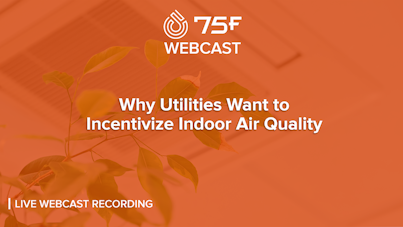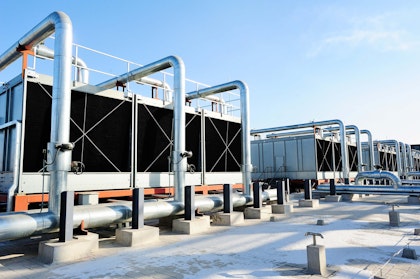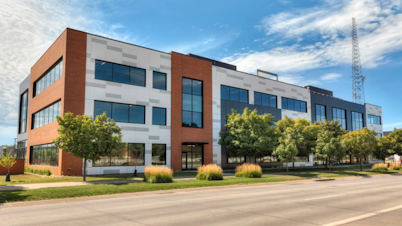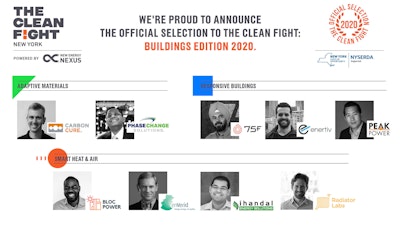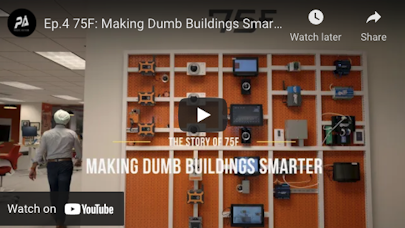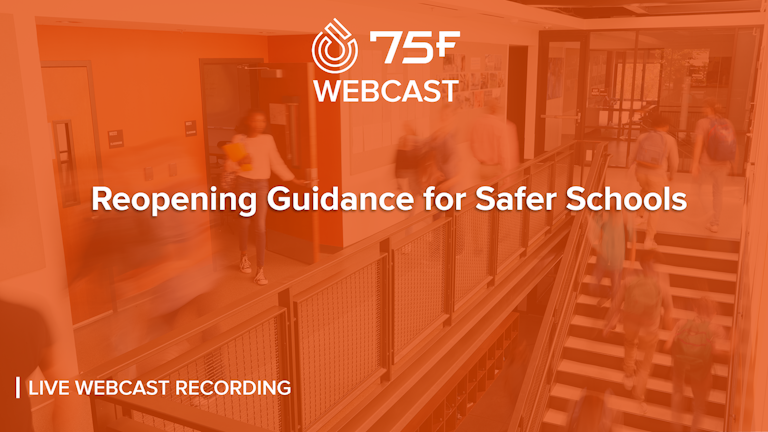
Healthier Buildings Series: Reopening Guidance for Safer Schools
Student health and safety is the foremost concern of educators across the country as fall classes commence amid COVID-19. In this Healthier Buildings webcast session, viewers learn how educators can use increased outdoor air ventilation to keep their classrooms safer without sacrificing energy efficiency, and garner parent trust.
For context, 75F invited two area school leaders to join the webcast and discuss their own school’s preparation for an unprecedented school year.
Webcast hosts are 75F founder and CEO, Deepinder Singh; Principal of St. Joseph Catholic School, Bruce Richards; and Ronald Mandelbaum, Board Chairman of Bais Yaakov High School of the Twin Cities. For a PDF of our slides, click here. Continue reading for an overview of webcast content.
How COVID-19 spreads, and what experts say you should do
Medical experts from trusted organizations such as the Centers for Disease Control and Prevention (CDC) point to person-to-person contact as the main facilitator for COVID-19 transmission. This mainly happens between people in close contact — closer than six or eight feet — through respiratory droplets expelled when an infected person coughs, sneezes, yells, or speaks normally.
The virus may also spread when a person touches an infected surface and then touches their eyes, nose, or mouth.
In recent weeks, those in medical research have been stressing the prevalence of airborne transmission — meaning infection can occur simply from breathing in airborne COVID-19 particles, even when further than six feet away from the source.
To prevent infection, the CDC encourages the usual: Wash your hands frequently and for at least 20 seconds, wear a mask in public, and keep your distance from others. When it comes to building operations, however, there's more to say. The CDC and other standard-setting organizations such as the American Society for Heating, Refrigerating, and Air-conditioning Engineers (ASHRAE) are urging upgraded filtration systems and altering HVAC systems to bring in higher amounts of fresh outside air, among other tactics.
Guidelines for the School Setting
Recommendations for safer building operations vary by a building's structure and purpose. The CDC has published detailed guidance for office spaces, places of worship, schools, and other spaces where specific activity — such as singing in religious spaces — warrant individual guidelines.
To see complete guidelines for school operation from the CDC, visit their website. For the purpose of this presentation, webcast presenters focused on utilizing outside air ventilation in schools per guidelines from the CDC and ASHRAE to make indoor spaces safer, as this is a central piece of operations guidelines from numerous experts.
ASHRAE's guidance for school operation during a pandemic boils down to specific action items that include:
For remodeling an existing air-handling unit (AHU), increase outside air to maximum allowable per AHU without compromising indoor thermal comfort for learning environment or space indoor air quality (IAQ).
For Dedicated Outdoor Air Systems (DOAS) that are being replaced, size unit capacity for at least 150% of code minimum flow.
During the pandemic, disable demand-control ventilation (DCV) and introduce the maximum possible OA flow 24/7 until further notice, including DOAS.
Mechanical Systems should be operated in occupied mode (including normal or peak outside air rate introduced to each space) for minimum period of 2 hours prior to occupants re-entering building.
For many schools, implementing this guidance is easier said than done. Facility managers have labor, equipment capacity and project scale to consider, plus extreme weather conditions and increased energy costs.
Using building intelligence to mitigate COVID-19
75F has pre-packed the core elements of outside air ventilation recommendations from the CDC and ASHRAE into a control sequence that facility managers or principals can turn on and off by themselves, all from a computer or mobile device.
75F users can access Epidemic Mode within Facilisight, 75F's building intelligence suite of web and mobile apps. Once activated, 75F Epidemic Mode™ will automatically increase your school's OA ventilation based on current weather conditions and equipment capacity. Users can also activate pre- and post-occupancy purges, which will replace inside air with fresh outdoor air before and after students and teachers occupy the building.
Schools operating on a hybrid occupancy model are also able to direct enhanced ventilation to only occupied spaces, saving valuable energy by not using conditioned outside air on empty zones. When the pandemic is over and it is safe to do so, customers can instantly turn off Epidemic Mode and return to 75F's award-winning algorithms for energy savings and comfort.
For Mandelbaum and Richards, the 75F solution was an optimal fit for their school year, especially considering the potential for savings during and after the pandemic.
"If we’re actually affecting real change and significant improvement to indoor air quality, that’s going to literally allow us to get open and stay open," Mandelbaum said of his school's 75F installation. "What wouldn’t you do? And it became very cost effective when we started looking at it in that means.”


